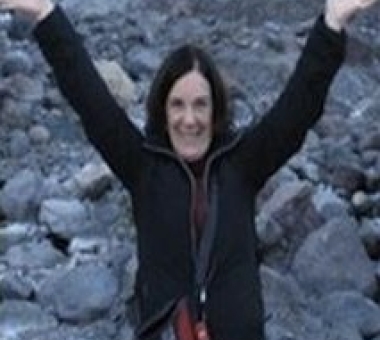Stories of Hope and Recovery

Marianne Lawrence
Angioplasty One Day, Anniversary Trip to Europe the Next
Marianne Lawrence was having a big year. In addition to planning a cross-country move from California to Washington, DC, she was preparing to climb Mt. Everest's base camp—something that had been her goal for a long time. Unfortunately, plans changed for this real estate agent when she began having severe shoulder pains while training for the mountain climb.
“I had a routine physical that year and everything checked out okay; there were no problems,” she says. “I’ve been a vegetarian for 20 years and have never been a smoker; I thought I was in good health.”
She thought the pain resulted from shoulder problems she had as from a skiing accident when she was younger and began seeing her acupuncturist to treat the pain.
“My acupuncturist had a family history of heart disease. His father had died of a heart attack just two years earlier. He urged me to get a stress test before I left for Mt. Everest,” says Marianne.
Stress, or treadmill, tests help simulate the work of the heart under stress, which can help doctors determine if enough blood is reaching the heart. Between a busy work schedule and planning for the move, Marianne thought she couldn’t find the time for a stress test and considered putting it off for a while. But the shoulder pain continued, and a few days later, Marianne scheduled the test at a nearby hospital.
“I couldn’t imagine there would be a problem. I went into the test thinking it would be just another false lead. But I had barely begun walking on the treadmill before the technician stopped the test and asked me to lie down,” says Marianne.
Doctors gave her nitroglycerin and told her they were taking her into the cath lab.
Dr. Paul Teirstein, an interventional cardiologist with Scripps Clinic in La Jolla, Calif., performed an angiogram that showed two of Marianne’s arteries were 90% blocked, and one was 70% blocked. He performed an angioplasty to open the arteries and placed drug-eluting stents (DES) in them to help keep them propped open.
It is common for women who have blockages in their arteries to experience unusual symptoms, such as pain in the arms, shoulders, neck, or back; nausea; fatigue; or lightheadedness. Many women do not experience the “classic” heart disease symptoms we often hear about, like pain in the center of the chest.
After the stents were in place, Marianne felt better almost immediately. “I felt great right away,” she says. “I could breathe easier, and I didn’t have to strain as much to catch my breath.”
For Marianne, however, leaving the hospital was only the beginning of her recovery. “It was a stressful few weeks,” says Marianne. “I had many questions for my cardiologist and was worried about my care.”
Marianne began to experience depression and panic attacks, which are common for heart disease patients after treatment. One in six patients who suffered a heart attack will experience depression, according to some studies. Dr. Teirstein referred Marianne to Dr. Mimi Guarneri, an integrative medicine specialist who is the founder and medical director of Scripps Center for Integrative Medicine. Dr. Guarneri helped Marianne combine traditional medical treatments with the complementary treatments she had been using, such as acupuncture.
Marianne had 16 weeks of cardiac rehab with Dr. Guarneri.
“I had been using alternative treatments for many years. Dr. Guarneri and I worked to create an individualized plan that combined traditional and complementary treatments, including diet, exercise, and stress reduction.”
After her angioplasty, Marianne stayed in California to complete her rehab and put off her trip to Mt. Everest.
“I felt like I had a whole new lease on life,” says Marianne.
She also decided to participate in WomenHeart, a patient advocacy group that promotes women’s heart health, so she could help other women learn the signs and symptoms of heart disease. And just as importantly, she wanted to spread the word to women that depression is a common occurrence after heart disease treatment, and it can be treated.
She now advocates for women battling the disease and speaks to women across the country about the importance of taking care of your body.
“I spent my career working in real estate, so I like to tell women, ‘You need to take care of your plumbing and electrical parts, just as you would in your home,’’ she says.
Since her angioplasty, Marianne has traveled to Morocco and hiking in Poland. And several years later, she finally realized her dream of climbing Mt. Everest. She climbed to 9,000 feet without pain and followed the adventure with two weeks of travel in India.
“Both my heart and my head celebrated India,” says Marianne. “Now that I know how important it is to care for my heart, I will do everything I can to keep it healthy.”